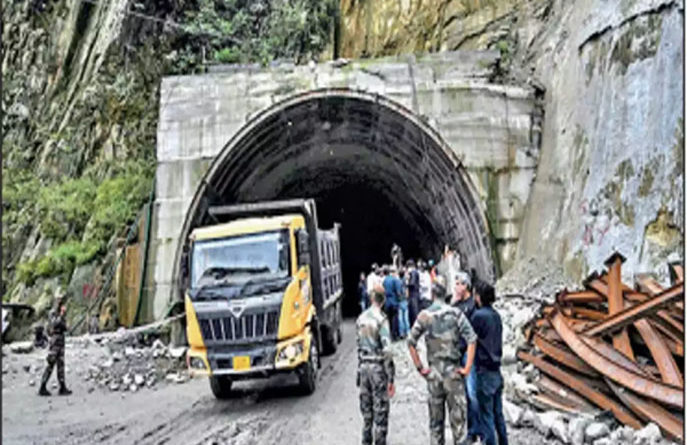Major Upgrade In Weapons, Surveillance And Infrastructure In East To Counter China
Oct 19, 2021
A general view of the under-construction Nechiphu Tunnel carried out by the Border Roads Organisation.
TENGA/RUPA: The pristine beauty of the mountains, rivers and lush-green valleys in Arunachal Pradesh somewhat masks frenetic military activity under way to deter, and if required thwart, any challenge from the dragon in the eastern sector.
The cranking up of combat capabilities and infrastructure along the 1,346-km border that Arunachal Pradesh and Sikkim share with China’s Tibet Autonomous Region has gained utmost urgency ever since the military confrontation erupted in the western sector of eastern Ladakh in April-May last year. Day and night surveillance capabilities have witnessed a major upgrade, with feeds from satellites, a wide array of radars and Israeli Heron Mark-II drones being sent to integrated surveillance and communication hubs to keep tabs on the People’s Liberation Army (PLA) across the border.
“There has been a major concerted push to use technology, with fusion of air and ground-based surveillance assets, to bring in transparency. He (China) cannot surprise us. We are very confident about dealing with the overall scenario,” said Major General Zubin A Minwalla, the general officer commanding of the Mountain Division.
At his headquarters at , the Corps Airspace Control Centre works in close conjunction with the IAF to get a “complete air picture” along the LAC, while the tracks PLA movements and infrastructure deep inside their territory. The latter, in fact, even has an artificial intelligence (AI)-based face recognition software to identify PLA officers.
Similarly, there is a “tremendous” drive to upgrade infrastructure, whether it be the Border Roads Organisation or the state government. “The most important infrastructure in the mountains is a road network,” said , who also oversees the military preparedness in the critical Tawang region.
Massive infrastructure construction is taking place in the region, including a new alternative western road axis to Tawang as well as tunnels and forward operating bases for Army Aviation, among other things.
There are, of course, still many operational gaps along the 3,488-km Line of Actual Control (LAC) from Ladakh to Arunachal Pradesh, with last-mile connectivity especially being a major problem for Indian soldiers in many stretches from the west to the east.
India, however, has significantly strengthened its combat punch along the northern borders. “The focus is on upgrading offensive and defensive capabilities, backed by the ongoing enhancement in surveillance and infrastructure,” said a senior officer.
It is quite evident in the entire eastern sector. The measures range from the basing of the second Rafale fighter squadron in Hasimara close to the Sikkim-Bhutan-Tibet tri-junction, which add to the Sukhoi-30MKI jets already deployed at air bases like Tezpur and Chabua, and to Akash surface-to-air missile systems and the old but still reliable 105mm artillery field guns and Bofors howitzers.
The induction of the new M-777 ultra-light howitzers, with a strike range of 30-km, has also boosted the high-volume artillery firepower, especially as they can be swiftly airlifted from one valley to another by Chinook helicopters in Arunachal Pradesh.
Courtesy: TOI

